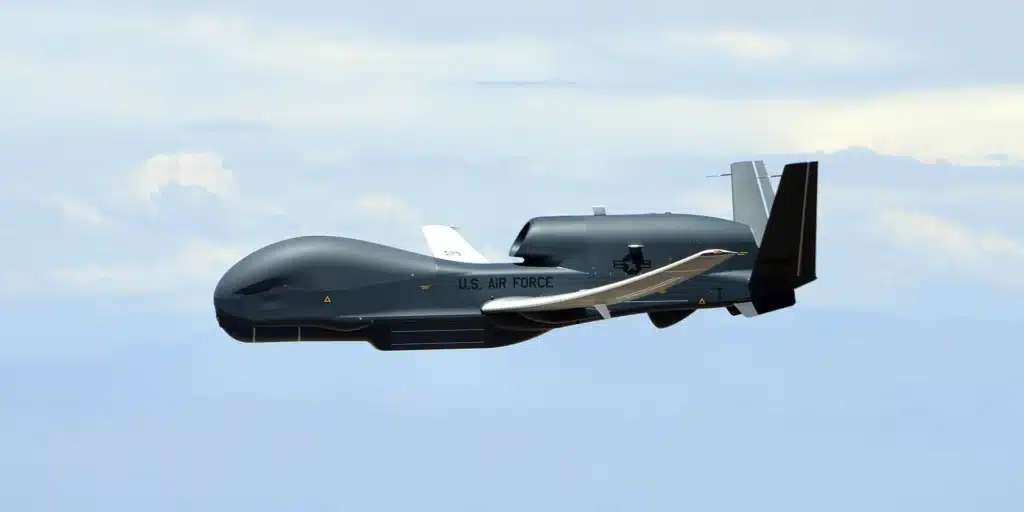RQ-4 Global Hawk: Advanced High-Altitude ISR P
Designed for global, all-weather intelligence missions, the RQ-4 Global Hawk delivers persistent, near-real-time surveillance through its integrated IMINT, SIGINT, and MTI sensors. Supporting joint combatant forces across peacetime to wartime operations, it ensures unmatched high-endurance reconnaissance capabilities day or night.
Global Hawk: High-Altitude Intelligence, Surveillance, and Reconnaissance (ISR) Platform
Block Variants and Mission Capabilities:
The RQ-4 Global Hawk is a high-altitude, long-endurance unmanned aerial vehicle (UAV) currently fielded in multiple configurations, each tailored for specific operational needs. The initial Block 10 aircraft were retired in 2011, after which focus shifted to Blocks 20, 30, and 40. Block 20 began with imagery intelligence (IMINT) capabilities, with three units later converted to EQ-4 communication relay platforms carrying the BACN payload. Block 30 introduced a multi-intelligence suite, integrating electro-optical, infrared, SAR, and both high- and low-band SIGINT sensors. This block reached initial operating capability (IOC) in August 2011 and has since supported global combat and humanitarian missions, including in Afghanistan, Iraq, Libya, and Japan. Block 40 features the advanced RTIP radar, offering Moving Target Indicator (MTI) and SAR functionality. With early operating capability declared in 2013, it supports four combatant commands, with full IOC expected in 2015.
Operational Structure and Endurance:
Global Hawk operations are managed through two components: the Launch and Recovery Element (LRE) and the Mission Control Element (MCE). The LRE handles aircraft launch and recovery at the base, while the MCE controls the mission remotely. Both elements are manned by pilots, with the MCE also including a sensor operator who manages sensor functions, updates collection plans, and ensures data quality. These roles are facilitated through sophisticated command and control data links and advanced operator workstations. With unmatched endurance exceeding 30 hours, Global Hawk provides flexible ISR options. Notably, in 2014, a Block 40 aircraft set a record with a 34.3-hour unrefueled flight—the longest in U.S. Air Force history.
Sure! Here’s a clean and organized table of the general characteristics of the Global Hawk:
Price:
The price of the aircraft is approx. $220 million.
| Feature | Details |
|---|---|
| Primary Function | High-altitude, long-endurance ISR |
| Contractor | Northrop Grumman (Prime), Raytheon, L3 Comm |
| Power Plant | Rolls Royce-North American F137-RR-100 turbofan engine |
| Thrust | 7,600 pounds |
| Wingspan | 130.9 feet (39.8 meters) |
| Length | 47.6 feet (14.5 meters) |
| Height | 15.3 feet (4.7 meters) |
| Weight (Empty) | 14,950 pounds (6,781 kilograms) |
| Maximum Takeoff Weight | 32,250 pounds (14,628 kilograms) |
| Fuel Capacity | 17,300 pounds (7,847 kilograms) |
| Payload Capacity | 3,000 pounds (1,360 kilograms) |
| Speed | 310 knots (357 mph) |
| Range | 12,300 nautical miles |
| Endurance | More than 34 hours |
| Ceiling | 60,000 feet (18,288 meters) |
| Armament | None |
| Crew (Remote) | Three (LRE pilot, MCE pilot, and sensor operator) |
Thank you for being here.

